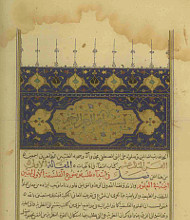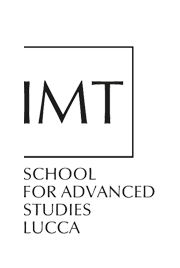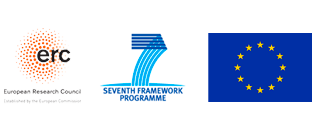Interdisciplinary aspects
Codicology; Methodology of Edition; Digital Humanities

Beginning of Ilāhiyyāt
Ms. Iran, Tehran, Kitābḫānah-i Maǧlis-i Shūrā-yi Millī (now: Kitābḫānah-i Maǧlis-i Shūrā-yi Islāmī = Parliament Library), 5254
Both in content and in methodology, the present project deals with a “philosophy on the border”. As already emphasized, in the Ilāhiyyāt philosophy lies at the intersection of distinct, albeit contiguous, linguistic, religious, and cultural areas. Accordingly, the project is addressed to an audience that will include not only the specialists of Avicenna’s thought, who will be presented for the first time with a reliable Arabic text of the Ilāhiyyāt, but also the students of Arabic philosophy and Islamic theology, and all the educated people interested in the history of civilization, who will receive sure instruments of acquaintance with, and comprehension of, this milestone of Arabic-Islamic culture. Also the project's chosen method represents an instance of bridge connecting different attitudes, approaches, and abilities, since traditional philology is asked to get in touch, to interact, and to be transfused into new electronic resources, in the context of the so-called “digital humanities”. In the methodological perspective, both the followers of traditional textual criticism and the advocates of modern computational techniques can find the project interesting.
(A1) More specifically, apart from a few codices preserved in Europe and United States, most of the manuscripts to be consulted in the edition are spread in libraries of the Near East and Central Asia: Tunisia (Tunis), Egypt (Cairo), Turkey (Istanbul; Ankara), Syria (Damascus), Lebanon (Beirut), Iraq (Mosul), Iran (Tehran; Mashad; Khoy), Pakistan (Peshawar) and India (Aligarh; Patna; Rampur). The project will thus provide scholars interested in codicology with valuable information on manuscripts dispersed among a number of different and remote repositories. Likewise, information on the production and circulation of codices may foster studies in the fields of later medieval and early modern history, genealogies of Islamic theology, and social and historical aspects of theological and philosophical schools in Islam.
(A2) The project is asked to devise an editorial methodology that can be followed in the study of other poorly edited or unpublished Arabic works having analogous extensive manuscript dissemination. Moreover, the facing English and Latin translations and the running commentary will be useful means for those who study doctrinal aspects of post-Avicennian philosophy and theology, and for experts of “Western” philosophy interested in the impact and later fate of Avicenna’s philosophy in Medieval and Renaissance philosophy. Arabic lexicography, Arabo-Latinist studies on Medieval translation techniques, and general studies in the history of Arabic-Islamic ideas, can take advantage from the indexes and lexica of the present project.
(A3) The interaction between the editorial process and computer science is expected to be fruitful in both directions: the projected critical edition, together with its complements, will be made possible by ad hoc computer techniques, but, conversely, the specific application of the employed technology to a work presenting the peculiarities of the Ilāhiyyāt (massive manuscript dissemination, large indirect tradition, Latin translation etc.) may offer decisive impulse to the amelioration, development, and empowering of the already existing technical practices and instruments.
The codicological database – designed in such a way as to provide images, transcriptions, transliterations, and translations of the most important parts of the stored manuscripts – can represent an useful device for the teaching of codicology.
Philosophy on the Border of Civilizations and Intellectual Endeavours:
Towards a Critical Edition of the Metaphysics (Ilâhiyyât of Kitâb al-Šifâʾ) of Avicenna (Ibn Sînâ)
ERC Advanced Grant 339621
Scuola Normale Superiore, Pisa, Italy
Piazza dei Cavalieri, n. 7
IMT School for Advanced Studies, Lucca, Italy
Piazza S. Ponziano, n. 6
Mail: info@avicennaproject.eu



